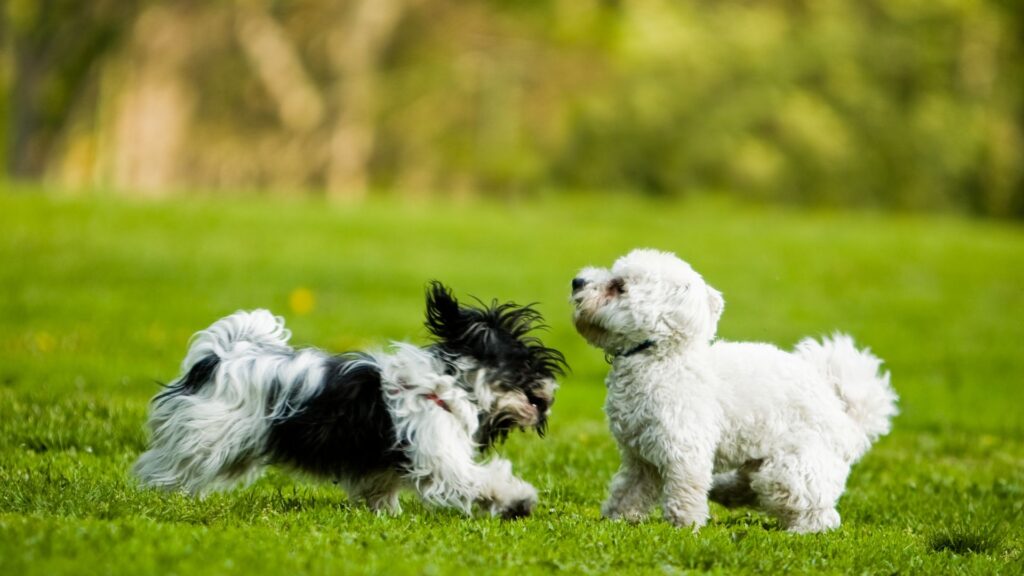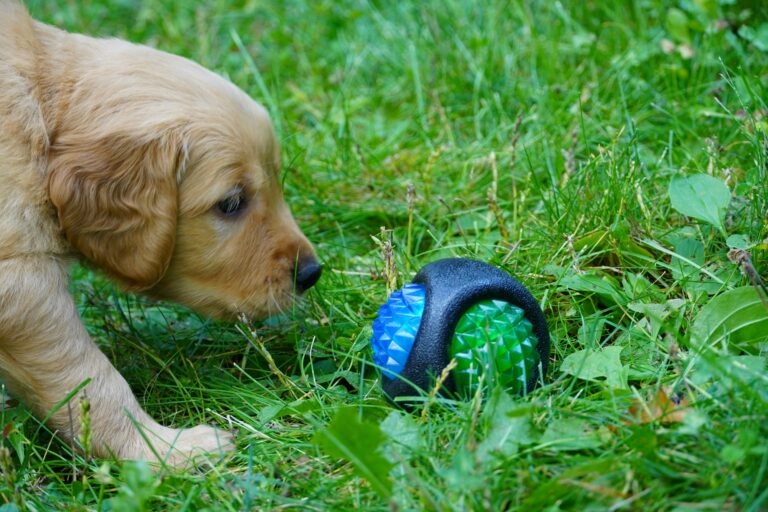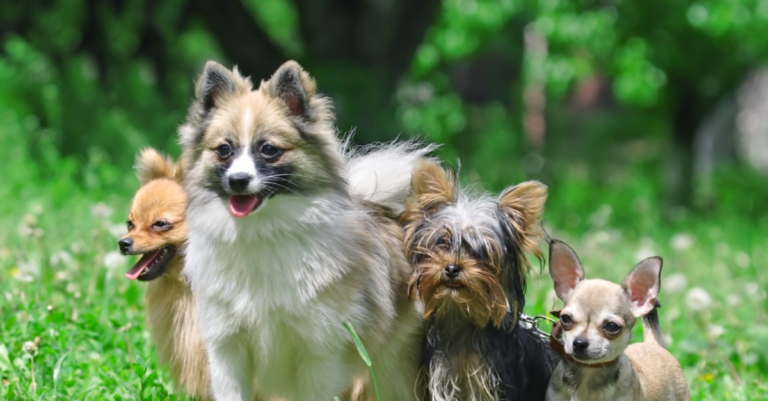The realm of dog training is vast and diverse, often varying greatly depending on the size, breed, and unique personality of each canine. However, when it comes to small dogs, their distinctive temperament and physical needs demand a more bespoke approach to their training. This post will delve into the fascinating world of ‘Pint-Sized Personalities: Tailoring Training for Small Dogs’ Unique Needs’, unpacking the nuances of this specific field and offering insightful strategies to help these little creatures become well-behaved, happy, and balanced companions.

Frequently, training small dogs is accompanied by unique challenges, largely due to their dynamic personalities, which often seem to contradict their petite size. They might be small in stature, but they are mighty in spirit! 🐾 Consequently, a one-size-fits-all training approach may not yield the desired outcomes. This post aims to debunk common misconceptions about small dogs, shed light on their specific needs and behavioral patterns, and introduce proven training methodologies tailored to their particular traits.
In our exploration, we will dissect the importance of understanding small dogs’ inherent traits, the impact of human-dog dynamics, and the significance of creating a positive and stimulating learning environment for them. We will also cover practical tips on how to navigate common behavioral issues, and reinforce positive habits in small dogs. From first-time owners to seasoned pet parents, anyone seeking to enhance their understanding of small dogs will find this post both enlightening and beneficial. Strap in for an engaging journey into the captivating world of ‘Pint-Sized Personalities’.
Understanding the Unique Learning Style of Small Dogs
Small dogs, with their unique personalities and distinct physiological attributes, demand a tailored approach in training. These diminutive canine friends possess specific cognitive and behavioral traits that require understanding and adaptation from the trainer’s side.
Biological Factors Affecting Small Dogs
Firstly, let us take into account the biological factors. The brain of a small dog is noticeably different from that of larger breeds. Their neural structures and functions vary, hence impacting their learning abilities. For instance, smaller dogs typically have a higher metabolic rate than larger dogs, which can affect their attention span and energy levels. This implies that their training sessions should be shorter, yet frequent and stimulating. It is also essential to maintain a balanced diet to ensure they have enough energy for learning.
Additionally, small dogs often have different skeletal structures compared to larger dogs, which can influence the types of physical activities and training exercises that are safe for them. Jumping from heights, rough agility courses, or intense physical pressure can cause injury to their delicate joints and bones. Therefore, careful consideration of their physical limitations is necessary when designing any training or play routine.
Another biological consideration is their heightened sensitivity to temperature. Small dogs are more prone to feeling cold or overheated. This means that environmental factors during training sessions must be managed to ensure the puppy’s comfort and safety. Outdoor training should preferably be scheduled during mild weather conditions, or conducted indoors when necessary.
Temperamental Traits of Small Dogs
Small dogs often possess specific temperamental traits that can influence their training needs. Many small breeds were historically bred for specific tasks, such as hunting vermin or alerting owners to strangers, and these instincts can still be present. This means that their innate traits should be considered during training.
For instance, small dogs with a strong prey drive may benefit from chase or fetch games that allow them to channel their instincts in a positive way. Dogs bred for companionship, like the Cavalier King Charles Spaniel, may require more social engagement and less independence training, focusing on attachment and attention exercises instead.
Similarly, breeds that were historically used as watchdogs, such as the Chihuahua, may require extensive socialization efforts to prevent excessive alert barking or fear-based aggression. Recognizing these breed-specific tendencies allows owners and trainers to create more customized and effective training strategies.
Creating a Customized Training Plan for Small Dogs
Physical Considerations in Training
In terms of physical needs, it is important to remember that small dogs have smaller bladders and may need more frequent bathroom breaks. Incorporating regular breaks in their training schedule can make the learning process more comfortable for them and prevent accidents, which in turn supports more consistent house-training progress.
Small dogs also have a lower tolerance to cold due to their size and limited body fat. Therefore, outdoor training should be scheduled during warmer times of the day or conducted in indoor environments during colder seasons. Using protective clothing such as dog sweaters during cold weather sessions can also contribute to their comfort and willingness to participate.
Pacing physical activity is essential. While small dogs can be energetic, they also tire easily. Short bursts of play or training are more effective than long sessions. Physical endurance should be built up gradually to avoid overexertion.
Understanding Temperamental Traits
A small dog’s temperament is an important aspect to consider when designing a training plan. For instance, some small breeds are naturally more independent and may require a different approach compared to more sociable breeds. Terriers, for example, may have a high prey drive and a strong-willed nature, necessitating more structured, consistent training routines.
Other small breeds, such as toy breeds bred for companionship, might be highly attuned to their owners’ emotions and could be sensitive to corrections. In these cases, gentle, patient teaching methods are particularly important. Praise and reward-based training will resonate more effectively and build trust more quickly than firm discipline.
Understanding whether a dog is more motivated by food, toys, or affection also plays a critical role. Some small dogs will work enthusiastically for a treat, while others might be more motivated by the promise of a game or a cuddle. Tailoring rewards to the individual dog ensures better engagement and faster learning.
Effective Training Methods for Small Dogs
Positive Reinforcement
Positive reinforcement involves rewarding desired behaviors, making them more likely to be repeated. This method can be particularly effective with small dogs, who often respond well to rewards such as treats, toys, and praise. It is important to use rewards that are appropriate for their size, such as tiny, soft treats that can be consumed quickly without disrupting the training flow.
Timing the reward immediately after the behavior ensures a clear connection between the action and the positive outcome. Delays can lead to confusion and slower learning. Keeping treats easily accessible during training sessions can help maintain momentum and focus.
Positive reinforcement also means ignoring unwanted behaviors rather than punishing them. For example, if a small dog jumps for attention, withholding attention and rewarding calm behavior teaches them what actions will earn rewards without the need for harsh corrections.
Clicker Training
Clicker training can be an effective method for training small dogs. The clicker sound acts as a marker to let the dog know exactly when they have performed the correct behavior. This can be especially useful for small dogs, who may not always be able to see hand signals or other visual cues from a distance.
Using a clicker ensures consistency, and because it is a unique sound that is only associated with positive outcomes, it becomes a powerful tool for communication. Starting clicker training is simple: first, teach the dog that a click always means a reward, then begin to click for desired behaviors.
Clicker training can be combined with shaping, capturing, or luring techniques to teach complex behaviors or to fine-tune obedience and tricks. It is a fun and highly interactive way to keep training sessions lively and engaging.
Common Training Challenges and Solutions
Small Dog Syndrome
Small Dog Syndrome refers to a range of behaviors often seen in small dogs, including excessive barking, aggression, and fearfulness. These behaviors are often a result of the dog feeling vulnerable due to its small size. It is crucial to address these behaviors early on through socialization and confidence-building exercises.
Rather than allowing unwanted behaviors to continue unchecked because they seem less threatening due to the dog’s small size, it is important to treat these behaviors seriously. Teaching polite greeting behavior, rewarding calmness, and setting clear boundaries help small dogs feel secure without resorting to aggression or dominance.
Confidence-building activities like low obstacle courses, trick training, and supervised play with appropriately sized, well-mannered dogs are invaluable in combating insecurity and developing a balanced, self-assured small dog.
Toilet Training Challenges
Toilet training can be a common challenge with small dogs, primarily due to their smaller bladders. Consistency, patience, and a predictable schedule are key to success.
Frequent opportunities to go outside, particularly after meals, naps, and play sessions, help reinforce good habits. Crate training can also be effective, as dogs naturally avoid soiling their sleeping areas.
Celebrating successes enthusiastically, while calmly cleaning up accidents without punishment, promotes a positive learning environment. Recognizing the signs that a puppy needs to go — such as sniffing, circling, or whining — and responding promptly reinforces their efforts and speeds up the learning process.
Socialization Challenges
Due to their small size, many owners inadvertently isolate small dogs, fearing they might get hurt during interactions. However, lack of socialization can lead to fearfulness, reactivity, and anxiety.
Safe, positive exposure to a wide range of people, animals, sounds, and environments from an early age builds resilience and confidence. Supervised puppy playgroups, neighborhood walks, and controlled visits to pet-friendly shops can all serve as excellent socialization opportunities.
Ensuring that experiences are positive, not overwhelming, is critical. Gradual exposure and lots of praise will help your small dog view the world with curiosity rather than fear.
Creating a Customized Training Plan for Small Dogs
Designing a training plan for small dogs involves catering to their physical needs, understanding their temperamental traits, and using appropriate training methods.
Physical Considerations in Training
In terms of physical needs, it’s important to remember that small dogs have smaller bladders and may need more frequent bathroom breaks. Incorporating regular breaks in their training schedule can make the learning process more comfortable for them. Moreover, small dogs have a lower tolerance to cold due to their size. Therefore, outdoor training should be scheduled during warmer times of the day or in an indoor environment during colder months.
Understanding Temperamental Traits
A small dog’s temperament is an important aspect to consider when designing a training plan. For instance, some small breeds are more independent and may require a different approach compared to more sociable breeds. It’s important to understand their inherent breed characteristics and adjust the training accordingly.
Effective Training Methods for Small Dogs
Training methods should be based on positive reinforcement and should take into account the unique needs and characteristics of small dogs.
Positive Reinforcement
Positive reinforcement involves rewarding desired behaviors, making them more likely to be repeated. This can be particularly effective with small dogs, who often respond well to rewards such as treats, toys, and praise. It’s important to use rewards that are suitable for small dogs, such as small-sized treats or toys.
Clicker Training
Clicker training can be an effective method for training small dogs. The clicker sound acts as a marker to let the dog know exactly when they have performed the correct behavior. This can be especially useful for small dogs, who may not always be able to see hand signals or other visual cues from a distance.
Common Training Challenges and Solutions
While training small dogs, it’s not uncommon to face specific challenges. However, with understanding and patience, these can be effectively addressed.
Small Dog Syndrome
Small Dog Syndrome refers to a range of behaviors often seen in small dogs, including excessive barking, aggression, and fearfulness. These behaviors are often a result of the dog feeling vulnerable due to its small size. It’s crucial to address these behaviors early on through socialization and confidence-building exercises.
Toilet Training Challenges
Toilet training can be a common challenge with small dogs, primarily due to their smaller bladders. Consistency and regular bathroom breaks can help overcome this issue.
Conclusion
In conclusion, effectively training small dogs requires an approach that’s tailored to their unique needs and pint-sized personalities. Emphasizing positive reinforcement, consistency, and patience are key to successful training outcomes. Small breeds can certainly be a handful, but their intelligence, drive, and loving nature make them well worth the effort. Avoid harsh training methods, as they can lead to behavioral problems and stress. Instead, use toys, treats, and praise to motivate your petite pet, ensuring the experience is fun and rewarding for them. Regular socialization is also crucial for small dogs, helping to prevent anxiety and fear-based aggression. Finally, remember to provide mental and physical stimulation to keep your small dog happy and healthy. This not only strengthens the bond between you but also aids in preventing behavioral issues. Training a small dog isn’t a one-size-fits-all scenario – it requires a bespoke approach, understanding, and love. But with these key tips, you’ll be well-equipped to bring out the best in your pint-sized pet. Embrace the challenge and enjoy the rewards of sharing your life with a well-trained, well-adjusted small dog.



